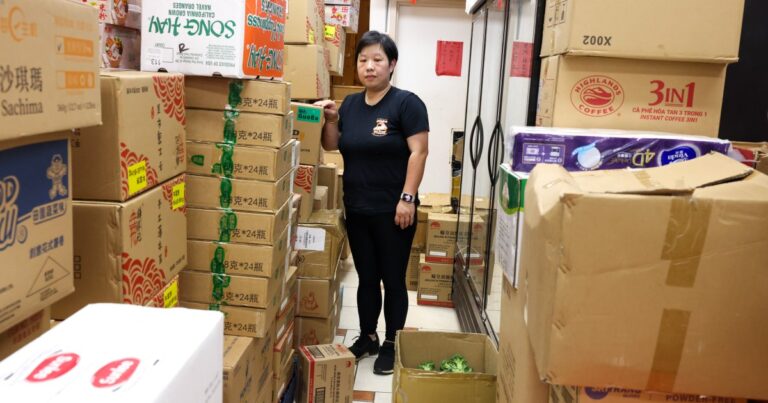Challenges Facing Small Business Owners Amid U.S.-China Trade Dispute
Overview of Escalating Tariffs
The ongoing trade conflict between the United States and China continues to intensify, leading to unprecedented tariff increases. Recent reports indicate that tariffs on specific Chinese imports have surged significantly—from 54% to a staggering 145% in just a few days. In response, China has also retaliated with tariff hikes on U.S. goods, establishing rates as high as 125%. This turmoil is part of a broader geopolitical struggle that increasingly complicates inventory management for small business owners.
Rising Costs Affect Inventory Planning
Business owners like Lei, a Chinese American entrepreneur, are closely monitoring these developments, as they directly affect operational costs. Price increases have already been felt in the market; for instance, a package of abalone chicken-flavored instant noodles from Hong Kong rose from $4 to over $5 within a week. Furthermore, Lei anticipates that future shipments could present costs that are more than double the current prices, adding another layer of complexity to her inventory planning.
Storage Solutions Amid Increased Demand
Lei’s preparedness for rising costs includes re-evaluating her storage capabilities. Currently, her attic serves as a warehouse overflowing with goods, but she recognizes that she may soon need to expand her storage solutions. This could include utilizing her home garage to accommodate an upcoming mass shipment of rice, reflecting the immediate need to manage increasing inventory demands while adjusting to the shifting economic landscape.
Conclusion
The steep increases in tariffs driven by the U.S.-China trade war are presenting significant challenges to small business owners like Lei. As they grapple with rising costs and inventory uncertainties, the implications of this trade dispute extend beyond immediate financial impacts, highlighting the increasingly complex nature of global commerce.



